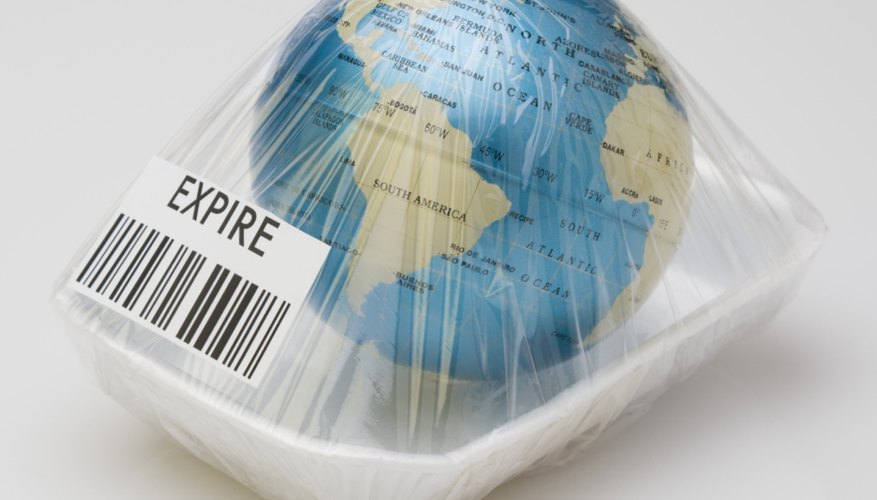Polyethylene is the most commonly used polymer in today’s world. It is produced in different grades and textures for applications in strong and flexible drainage pipes, structural components in buildings, soft drinks bottles, cling film, and artificial leathers. Polyethylene is very resistant to abrasion and chemical corrosion by acids and alkalis. But it does dissolve at higher temperatures in a number of organic solvents, such as acetone, which is found in some nail polish removers.
- Polyethylene is the most commonly used polymer in today’s world.
- It is produced in different grades and textures for applications in strong and flexible drainage pipes, structural components in buildings, soft drinks bottles, cling film, and artificial leathers.
Tear off some pieces of cling film from a roll. Use the scissors to cut the film into smaller pieces approximately 2 cm by 2 cm (3/4 inch x 3/4 inch). Place these on the tissue paper to ensure they are dry.
Put on the breathing mask and eye goggles. Acetone is a very volatile liquid with an unpleasant smell. Pour out about 100 ml (3.4 fl oz) of acetone into the gradation cylinder. Pour this liquid into the flask or beaker.
Drop the pieces of cling film one by one slowly into the flask with acetone. Wait for about 10 minutes for them to begin dissolving. This is a slow process so patience is required. Stir the mixture with the glass rod. If the cling film has not started to dissolve, pour in another 100 ml (3.4 fl oz) of acetone into the flask.
- Put on the breathing mask and eye goggles.
- If the cling film has not started to dissolve, pour in another 100 ml (3.4 fl oz) of acetone into the flask.
Cover the flask with a glass or ceramic lid and set aside for a few days. Inspect the mixture from time to time and stir with the glass rod. Add extra acetone to the mixture to encourage more solution. The cling film should have dissolved within a week.
TIP
Conduct this experiment in a warm room or outdoors in warm weather of at an ambient temperature of least 21 degrees Celsius (70 degrees Fahrenheit). This is the temperature at which low density polyethylene that is used for cling film will dissolve in acetone.
Ensure that there is good ventilation as any acetone vapour may cause irritation to the eyes.
Keep the acetone away from any naked flame as it its highly inflammable.
